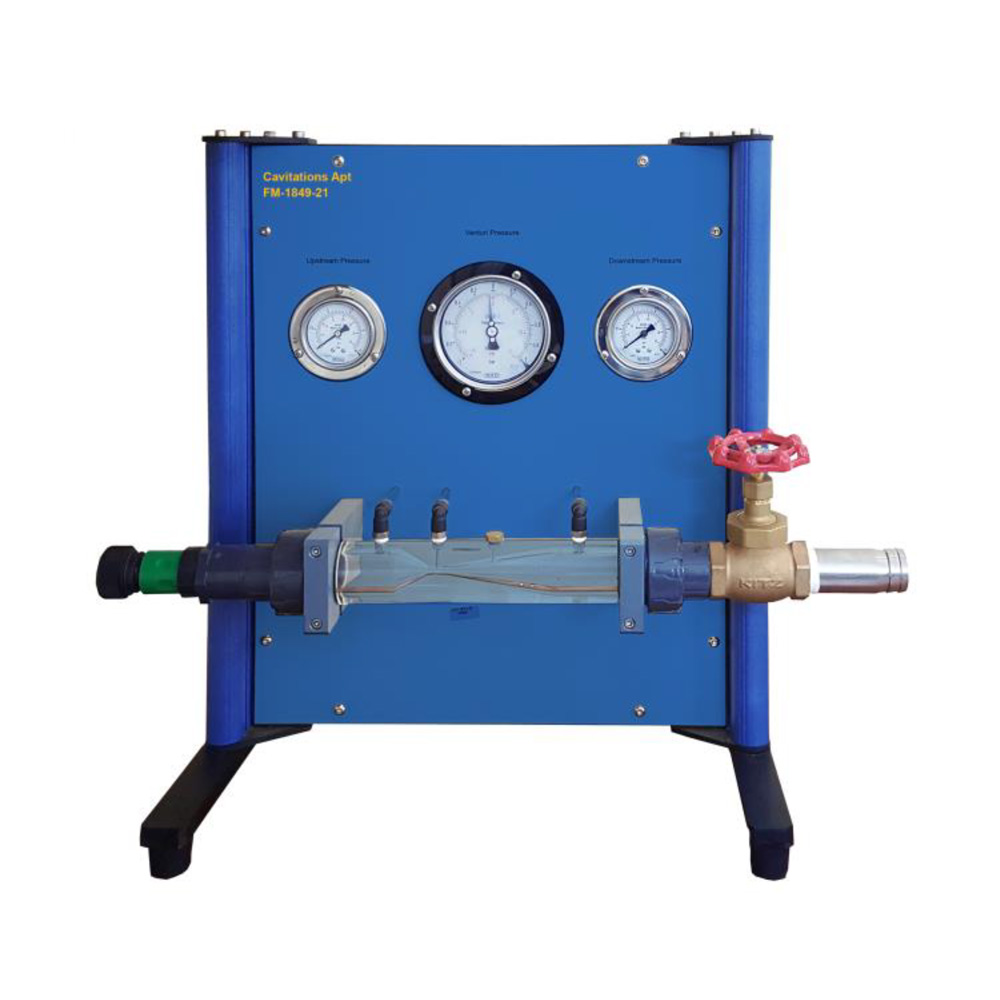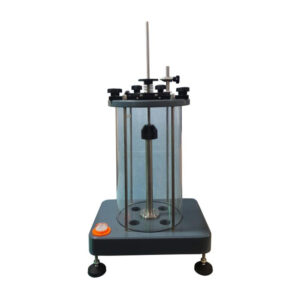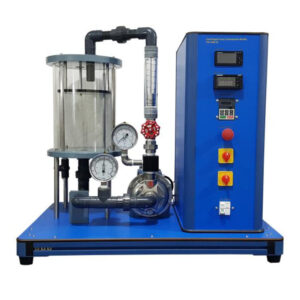Cavitation refers to the formation of vapour bubbles in flowing fluids due to strong low pressure. The unit mounted on the hydraulic bench is used to demonstrate the process of cavitation. It consists of a venturi tube made from a clear acrylic allow an easy visualization inside the section. When water flow rate increases, pressure at the throat is reduced complying with the Bernoulli equation until the vapour pressure of the liquid is reached and small bubbles of vapour form and then they collapse violently as the pressure rises again downstream; this Phenomena is called cavitation. Bourdon gauges indicate the pressure upstream of the contraction, inside the throat and downstream of the contraction. Flow control valve to the test section enable to adjust flow and pressure so that the Phenomena of cavitation can be demonstrated. The apparatus consists of a circular Venturi-shaped test section manufactured from clear Acrylic to allow full Visualization of flow conditions inside the section. Water enters the test section at relatively low velocity. As the area of the test section contracts towards the throat the velocity of the water increases and the static pressure falls in accordance with the Bernoulli equation. If the flow of water is increased the subatmospheric pressure at the throat causes free and dissolved gasses to be released as bubbles in the liquid. As the flow is increased further the pressure continues to fall at the throat until a limit is reached corresponding to the Vapour Pressure of the liquid (the actual pressure depending on the temperature of the liquid). At this condition small bubbles of vapour are formed in the liquid. These bubbles collapse violently as the pressure rises again in the downstream expansion of the test section. This process is called Cavitation and can be regarded as one of the most destructive forces created in a liquid system – the large amounts of energy released resulting in erosion of even the hardest metal surfaces in real applications such as valve seats, propeller blades etc. Any further increase in the flow of liquid causes an increase in the Cavitation (the pressure cannot reduce any further than the Vapour Pressure of the liquid). The test section incorporates tappings that allow the static pressure upstream of the contraction, inside the throat and downstream of the expansion to be measured. Each tapping is connected to a Bourdon gauge of appropriate range. A flow control valve upstream of the test section allows the flow through the test section to be regulated without raising the static pressure in the test section, allowing Cavitation to be clearly demonstrated. The closure of the downstream valve is restricted to prevent damage to the instrumentation. The test section and Bourdon gauges are mounted on a plate with feet that locates on top of the Hydraulics bench. The accessory includes the necessary flexible tubes and a connector to suit the water outlet of hydraulic Bench.
Experiments
- Observation of the Phenomena of Cavitation in a liquid (by reducing the pressure of the liquid to its Vapour Pressure).
- Comparison of theoretical and actual pressure at Cavitation conditions.
- Observation of air-release due to free and dissolved gasses in a liquid.
- Demonstration of reducing Cavitation by increasing the static pressure in a liquid.
Specification
- Upstream pressure gauge: Range 0~4 Bar
- Throat vacuum gauge: Range -1 to 1 Bar
- Downstream pressure gauge: Range 0~4 Bar




